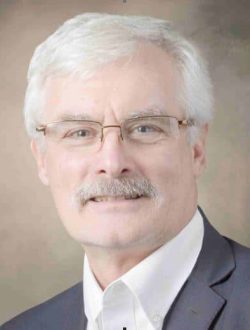RF Aspects of Magnetic Resonance Imaging
Date of original webcast: Tuesday, April 11, 2017
Duration: 1 hour
Summary
Magnetic Resonance Imaging (MRI) scanners are an important diagnostic tool for the medical practitioner. MRI provides a non-invasive means of obtaining high contrast images of soft tissues and to obtain real-time images of the cardiovascular system and other dynamic changes in the human body. MRI scanners rely heavily on a number of topical areas of interest to Electrical Engineers: image processing, high speed computing and RF (radio frequency) systems and components. This presentation will focus on some of the RF aspects of the MR process and MR scanners. A primer on the physical phenomenon behind magnetic resonance will start the presentation and include a discussion of the origin of the MR signal. The need for the high static magnetic field (B0), the use of gradient coils for MR signal spatial encoding, simple RF pulse sequences and how they are used in image construction will be covered. This MR image construction process and the control of the various steps that manipulate the atomic nuclei to generate the final MR diagnostic image put demanding constraints on RF equipment capabilities and these will be discussed, along with a high-level overview of the various components making up conventional MRI systems. This high-level overview will include a look at various examples of transmit and receive RF systems and examples of transmit and receive coils that make up MR scanners and system diagrams for both the RF transmit and receive paths. The talk will then narrow in scope to look at how these RF coils are modeled and controlled in both transmit and receive states and how these components are used for transmit/receive switching and patient and equipment protection.
Attendance is free. To access the event please register.
Note: By registering for this webinar you understand and agree that IEEE may share your contact information with the sponsors of this webinar and that both IEEE and the sponsors may send email communications to you in the future.
Speakers

Robert H. Caverly
Robert Caverly is currently a member of the faculty at Villanova University in the Department of Electrical and Computer Engineering. He is the current Editor in Chief of the IEEE Microwave Magazine.
His webpage is http://rcaverly.ece.villanova.edu/rcaverly/rcaverly.htm

Michael C. Hamilton
Dr. Michael C. Hamilton is an Associate Professor in the Electrical and Computer Engineering Department at Auburn University and the Assistant Director of the Alabama Microelectronics Science and Technology Center.